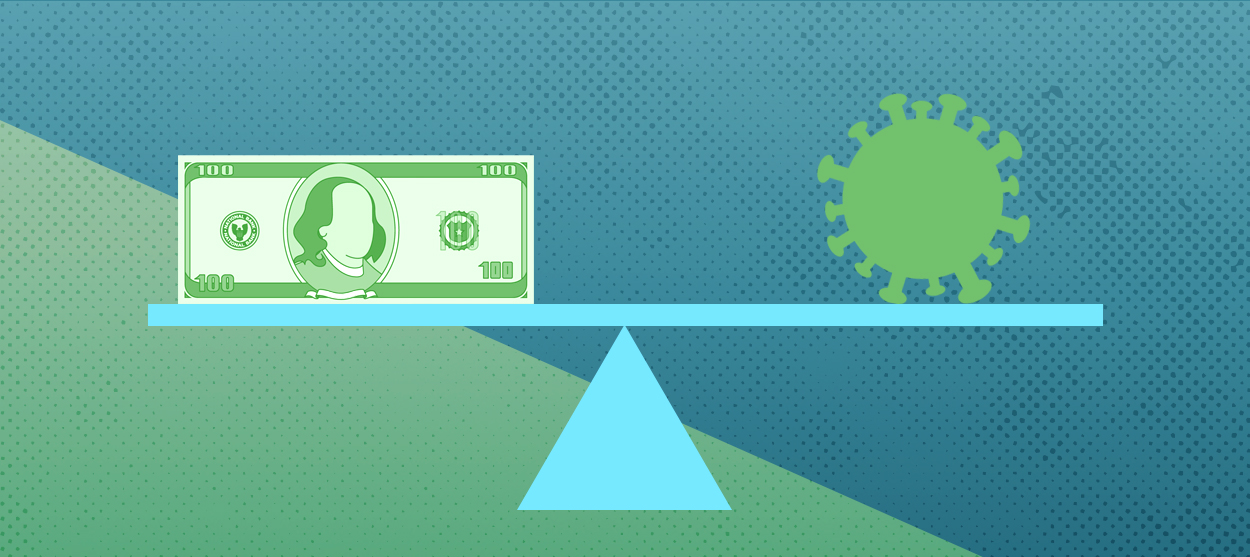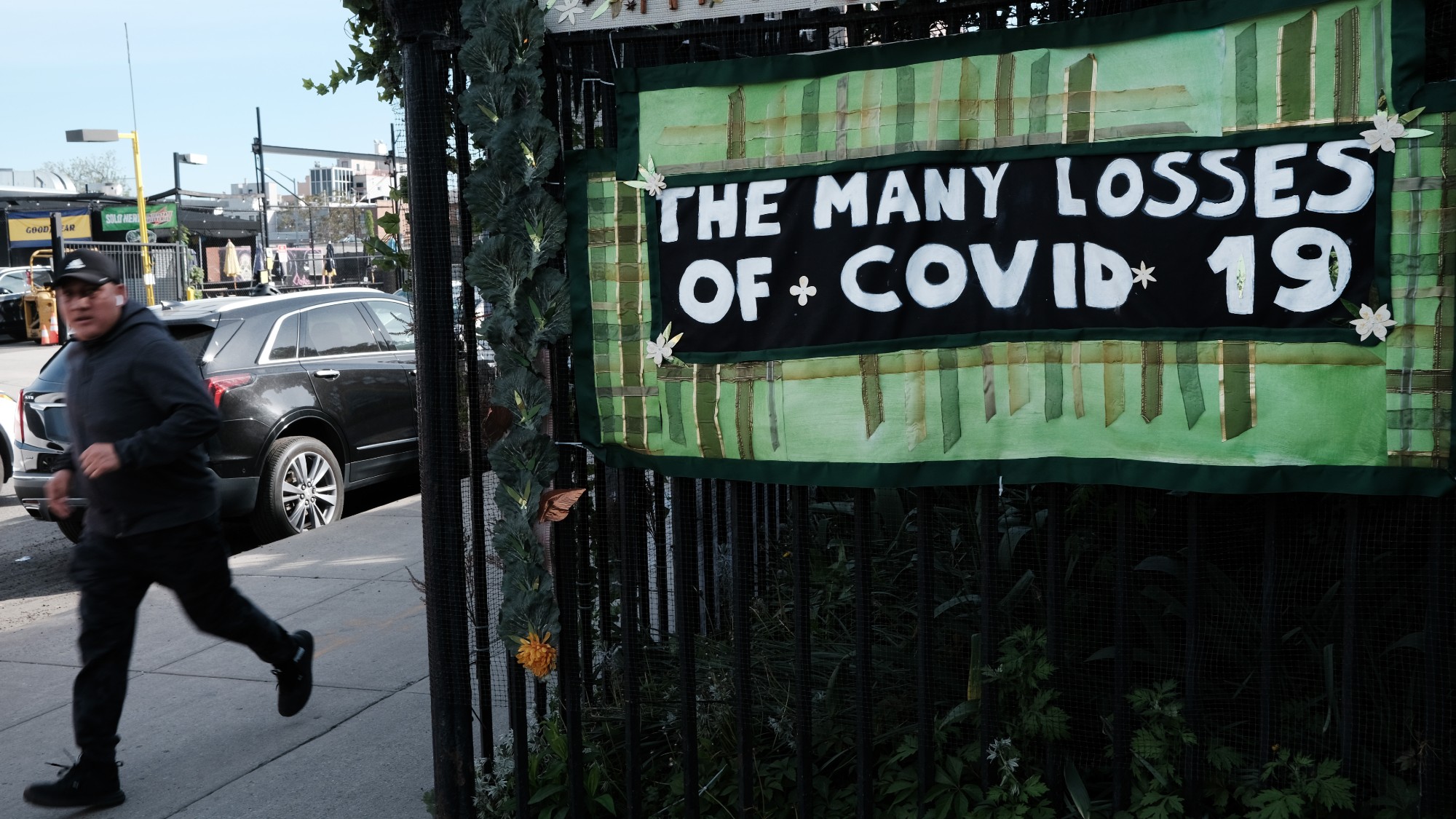How to fight a coronavirus recession
The economy looks set to take a major hit. But there are steps the government can take to cushion the blow.


At this point, the spreading COVID-19 coronavirus is not just a clear and present danger to American lives, but to our economy as well. The major quarantines in China have curtailed both the country's exports of goods and parts, as well as its imports from the U.S. and the rest of the world. Other outbreaks of the virus are popping up around the globe, and U.S. officials are saying it's all but certain to spread domestically as well. Indeed, with shocks still rippling through supply chains, we likely don't even know the full scope of the disruptions that are already baked in, much less the possible worst-case scenarios to come.
But there are steps the U.S. government could take to protect the American economy from a recession, if they move as quickly as possible. Specifically, the Federal Reserve should cut interest rates, and Congress and President Trump should put together a fiscal stimulus package to support the economy going forward.
Thus far, the Fed's governing officials have played things close to the vest, giving no indication how or if they will respond to the economic effects of coronavirus. But almost half of U.S. companies that have business with China told a recent survey they expect to see revenue declines if things can't return to normal by May — and one-fifth said they could lose half their revenue if COVID-19 isn't contained by the end of August. The Fed's next meeting is not until mid-March. But to some degree, Fed officials could convince the financial markets to begin offering more credit right now simply by declaring unequivocally that they will cut at the next meeting.
The Week
Escape your echo chamber. Get the facts behind the news, plus analysis from multiple perspectives.

Sign up for The Week's Free Newsletters
From our morning news briefing to a weekly Good News Newsletter, get the best of The Week delivered directly to your inbox.
From our morning news briefing to a weekly Good News Newsletter, get the best of The Week delivered directly to your inbox.
The central bank's recent cuts have been very modest adjustments of 0.25 percent each, and it should take the next meeting as an opportunity to do at least that much. In fact, economist Kevin Warsh — a former Fed official, and usually a monetary policy hawk — has already called for the central bank to do just that. Financial analysts just told Politico they anticipate two rate cuts in April and June, and U.S. financial markets are already pricing in an 85 percent chance of a rate cut by mid-summer. It was 50-50 just a month ago.
Fiscal policy should also get in on the act. Obviously, the government should be making whatever public investments are necessary to respond to the virus directly: more resources for health responders to screen for symptoms, monitor the spread, and care for people who have become infected. Congress is already debating spending packages of $4 billion to over $8 billion — and policymakers have blasted the Trump administration for a tepid response so far. But we also need broader measures to support economic activity as a whole, and get more spending money out there. A good example is the tax cut passed in response to the 2001 recession: President George W. Bush signed the tax cut in February, and by the end of April rebate checks were going out to Americans in the mail. Another example is the temporary payroll tax cut that was part of the 2009 stimulus under President Obama. Federal payroll taxes bring in a colossal amount of money — roughly six percent of GDP each year — and reducing them or even eliminating them for a temporary period would leave that money in the economy for spending. Indeed, since payroll taxes are automatically collected out of each paycheck, a halt to the tax would immediately put more money in Americans' pockets.
Now, there are real limits to what monetary and fiscal policy can do in a situation like this. Both an interest rate cut and deficit spending are ways to increase aggregate spending. But when a disease like the coronavirus shuts down economic activity, people can't shop and spend money, and they also can't go into work to produce the goods and services that other still-healthy populations are ready and willing to buy. As dramatic as the stock market's 10 percent nose-dive is, this effect on normal consumers and workers is the real threat to the economy. If workers can't man a factory because they have to stay home — or have been ordered to stay home — to avoid spreading a disease, no amount of money pumped into the economy can coax more production out of them. This is also why a fiscal response to the coronavirus should focus on pure cash stimulus, since it will be hard to predict what specific areas of real-world work and production will and won't be affected.
Furthermore, America shouldn't just stimulate for its own sake, but for the world's. Outside of China, we are the globe's biggest source of demand, buying up a huge portion of everyone else's exports. With China's consumption dropping, and consumption in other areas hit by COVID-19 sure to fall as well, the world will need us to fill in the money hole to keep the healthy parts of the global economy cranking along. Indeed, other countries should be stimulating too: Europe in particular is in the economic doldrums entirely due to self-inflicted wounds. If the European Central Bank and the eurozone financial system eased up on borrowing limits for countries, and if European policymakers permitted deficit spending again on a large scale, the continent could power itself back to economic health, and inoculate itself against at least some of the economic after-effects of the coronavirus' spread.
A free daily email with the biggest news stories of the day – and the best features from TheWeek.com
Finally, we should think about longer-term policy changes that could help prevent future outbreaks. For instance, if the U.S. had a national paid sick leave system, employees would not feel nearly so much pressure to come into work when they're ill or showing symptoms. And guaranteeing affordable health care access for all Americans, such as with a Medicare-for-all program, would allow everyone to get treated as soon as possible when they think they might be sick, as opposed to forgoing a doctor visit entirely in order to avoid the costs. And our failures to properly regulate market structures or enforce antitrust law have left us with highly-concentrated and monopolized global supply chains with little redundancy; we're vulnerable to shortages and collapse if one key part goes down.
As an economic correspondent, writing about the coronavirus is tough: You want to walk a line between realistically assessing the risks while also avoiding undue alarmism. Trump economic advisor Larry Kudlow may have brushed off the need for stimulus, saying the outbreak isn't likely to become an "economic tragedy." But when it comes to COVID-19, moving now with an aggressive emergency-style stimulus is the best way to ensure that prediction actually comes true.
Jeff Spross was the economics and business correspondent at TheWeek.com. He was previously a reporter at ThinkProgress.
-
 Political cartoons for January 4
Political cartoons for January 4Cartoons Sunday's political cartoons include a resolution to learn a new language, and new names in Hades and on battleships
-
 The ultimate films of 2025 by genre
The ultimate films of 2025 by genreThe Week Recommends From comedies to thrillers, documentaries to animations, 2025 featured some unforgettable film moments
-
 Political cartoons for January 3
Political cartoons for January 3Cartoons Saturday's political cartoons include citizen journalists, self-reflective AI, and Donald Trump's transparency
-
 Bari Weiss’ ‘60 Minutes’ scandal is about more than one report
Bari Weiss’ ‘60 Minutes’ scandal is about more than one reportIN THE SPOTLIGHT By blocking an approved segment on a controversial prison holding US deportees in El Salvador, the editor-in-chief of CBS News has become the main story
-
 Has Zohran Mamdani shown the Democrats how to win again?
Has Zohran Mamdani shown the Democrats how to win again?Today’s Big Question New York City mayoral election touted as victory for left-wing populists but moderate centrist wins elsewhere present more complex path for Democratic Party
-
 Millions turn out for anti-Trump ‘No Kings’ rallies
Millions turn out for anti-Trump ‘No Kings’ ralliesSpeed Read An estimated 7 million people participated, 2 million more than at the first ‘No Kings’ protest in June
-
 Ghislaine Maxwell: angling for a Trump pardon
Ghislaine Maxwell: angling for a Trump pardonTalking Point Convicted sex trafficker's testimony could shed new light on president's links to Jeffrey Epstein
-
 The last words and final moments of 40 presidents
The last words and final moments of 40 presidentsThe Explainer Some are eloquent quotes worthy of the holders of the highest office in the nation, and others... aren't
-
 The JFK files: the truth at last?
The JFK files: the truth at last?In The Spotlight More than 64,000 previously classified documents relating the 1963 assassination of John F. Kennedy have been released by the Trump administration
-
 'There is a certain kind of strength in refusing to concede error'
'There is a certain kind of strength in refusing to concede error'instant opinion 'Opinion, comment and editorials of the day'
-
 'Most Americans have never heard of the Office of Net Assessment'
'Most Americans have never heard of the Office of Net Assessment'Instant Opinion Opinion, comment and editorials of the day
